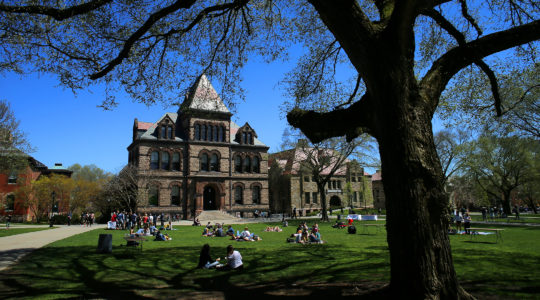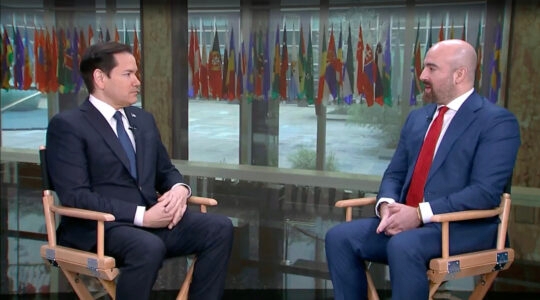LOS ANGELES (JTA) — The 1919 letter with Hitler’s slanted signature brings back some personal memories of growing up as a Jewish boy in Berlin.
I saw Adolf Hitler in person two times. The first was in 1934, when I was 9 and living in an apartment on the Reichsstrasse, a main avenue radiating out from the nearby central square, the Reichskanzler Platz (Chancellor Square).
Looking down from our window, we saw a procession of limousines, flanked by SS men, and in the middle was the Fuehrer riding in an open car, returning the straight-armed salute of the masses with his typical sloppy bent-armed wave. Perhaps he was returning from the Reichskanzler Platz, which had just been renamed Adolf Hitler Platz.
Much later, when Lee Harvey Oswald shot President Kennedy, it occurred to me that the distance and line of sight in the Dallas assassination in 1963 was similar to the positions between Hitler and me three decades earlier.
My second encounter was in 1936, when Italy’s Benito Mussolini paid a visit to Hitler in Berlin and the two dictators rode down Unter den Linden in the same car. I watched amid masses of jubilant Berliners.
A final association with Hitler occurred on April 20, 1939, the day my mother, sister and I took a taxi to Tempelhof Airport to fly from Berlin to Croydon Airport in London — a big deal at the time.
On the way, every pole and public building was festooned with huge, streaming swastika flags and I thought that my Aryan countrymen might be celebrating our departure from the Fatherland. I was a bit disappointed to learn that in reality the city was celebrating Hitler’s 50th birthday.
The first thing that struck me upon arriving in America was the flag. I had left behind the blood-red banners with the ominous black swastika in the middle, a symbol of ruthless force.
By contrast the American flag, with its colorful stars and stripes, seemed playful, a child’s banner in a make-believe parade.
JTA has documented Jewish history in real-time for over a century. Keep our journalism strong by joining us in supporting independent, award-winning reporting.





